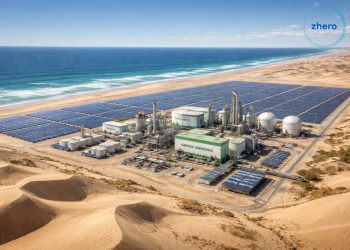
The Namibian mining industry spent N$23.9 billion on goods and services from Namibian-registered businesses in 2024, accounting for 46.7% of the sector’s total revenue of N$51.4 billion, the Chamber of Mines has revealed.
Chief Executive Officer Veston Malango said the sector continues to underpin inclusive economic growth by prioritising local procurement.
“The mining industry not only stimulates national economic activity but also strengthens small and medium enterprises, supports local employment creation, and contributes to long-term socio-economic development in Namibia by maintaining a high proportion of local procurement,” Malango said.
Direct employment in the mining sector rose to 20,843 in 2024, reflecting a 14.6% increase from 18,189 the previous year. Despite isolated retrenchments, the industry continued to grow its workforce.
“The steady rise in employment underscores the industry’s resilience and its contribution to national job creation efforts,” he said.
The sector’s wage bill reached nearly N$8 billion, with mining employees contributing N$1.7 billion in PAYE tax. Total taxes paid to government fell to N$5.6 billion, an 18% decline from N$6.9 billion in 2023. This was mainly due to a drop in diamond sales.
“This sharp reduction was primarily driven by lower diamond sales, which form a substantial portion of the sector’s fiscal contributions,” Malango explained.
Corporate taxes declined by 24.2%, royalties by 10.9%, and export levies by 0.28%.
Diamond production decreased by 6.3% in 2024 as a result of weak global demand, lower prices, and planned production cuts to protect market value.
“Despite the strong performance in other commodities like gold, the dominance of diamonds in the fiscal structure of the sector meant that the challenges in diamond production and sales had a much bigger impact on government revenue,” Malango said.
Meanwhile, uranium output grew by 5% in 2024, a slower pace than the 24.5% recorded in 2023. The slowdown was attributed to water shortages and maintenance shutdowns at Rössing and Swakop mines, partly offset by additional production from Langer Heinrich.
Gold production increased by 2.7%, driven by record output from Navachab. However, lead and zinc concentrate volumes were affected by lower ore grades despite stronger global demand.
The sector faced a 1.2% contraction in real value added last year, reversing the 19.3% growth recorded in 2023, according to the Namibia Statistics Agency. The downturn came despite favourable global prices for uranium, gold, copper and zinc.
Nonetheless, Malango said the industry remains a key driver of the Namibian economy, contributing 13.3% to GDP in 2024.
“Mining remains the cornerstone of Namibia’s economy. It continues to play an instrumental role in driving economic growth and supporting national development,” he said.







